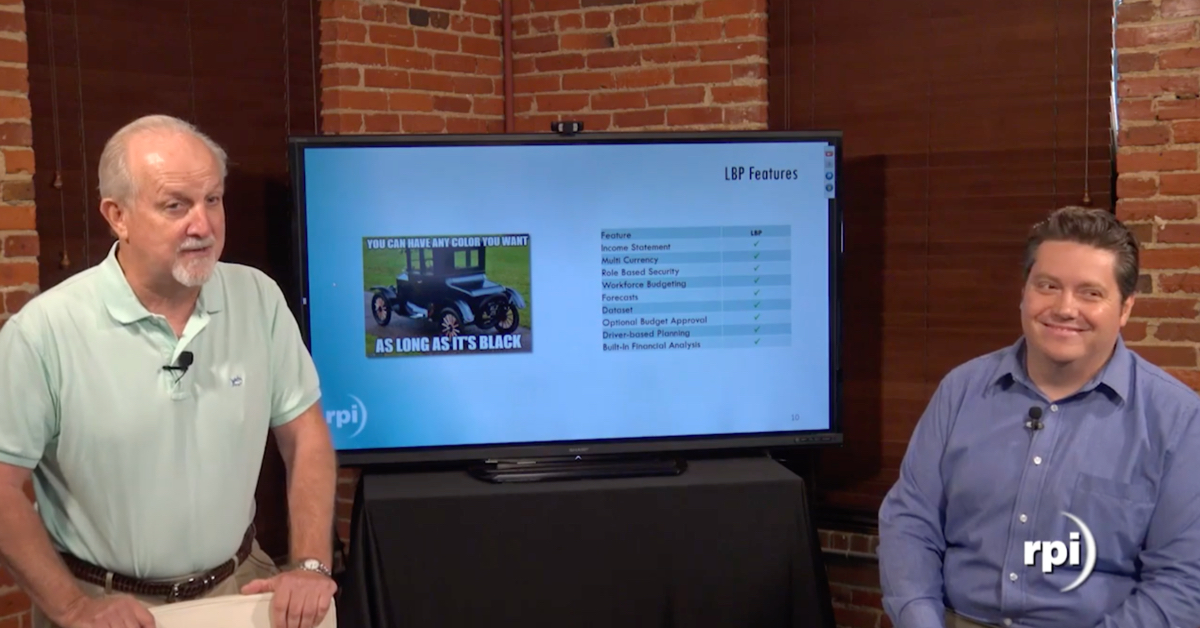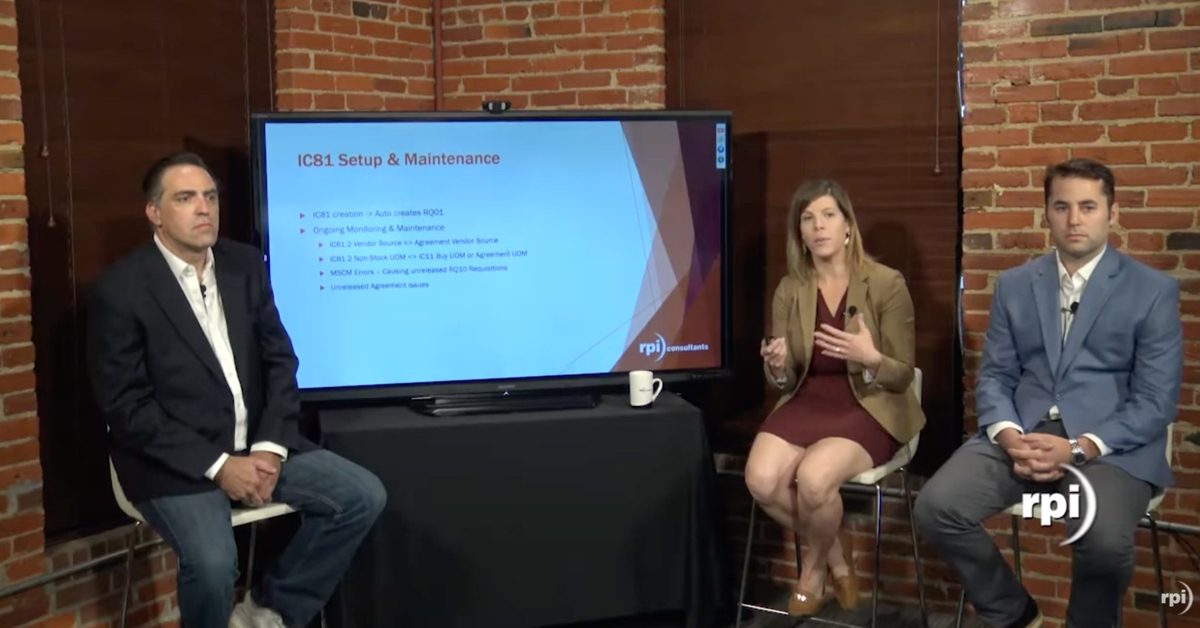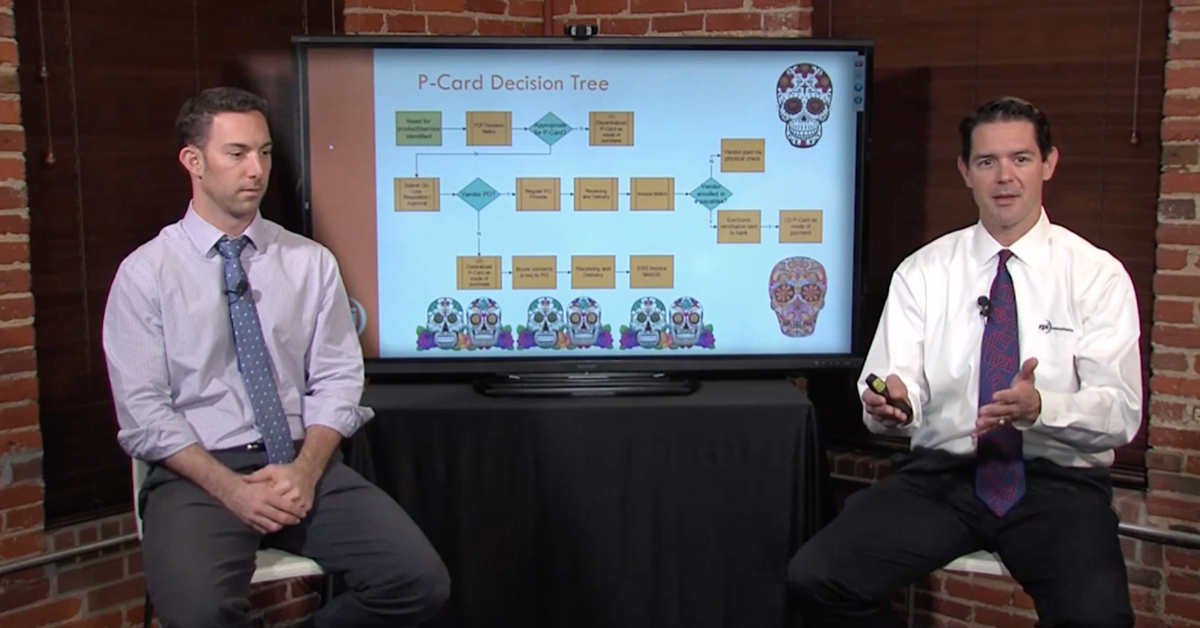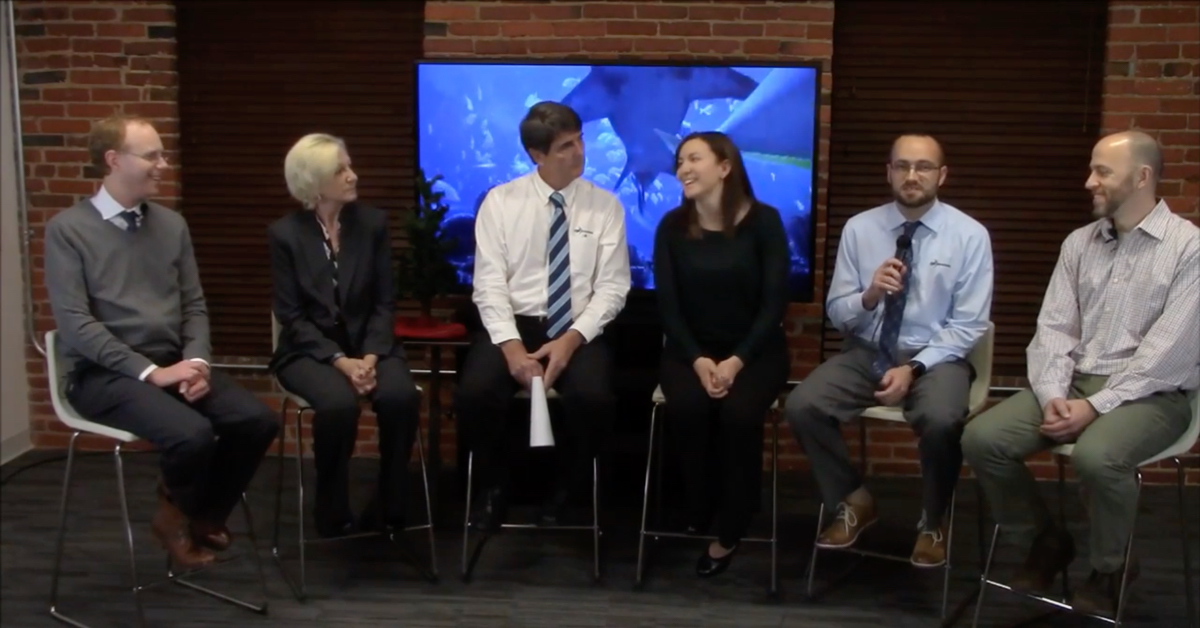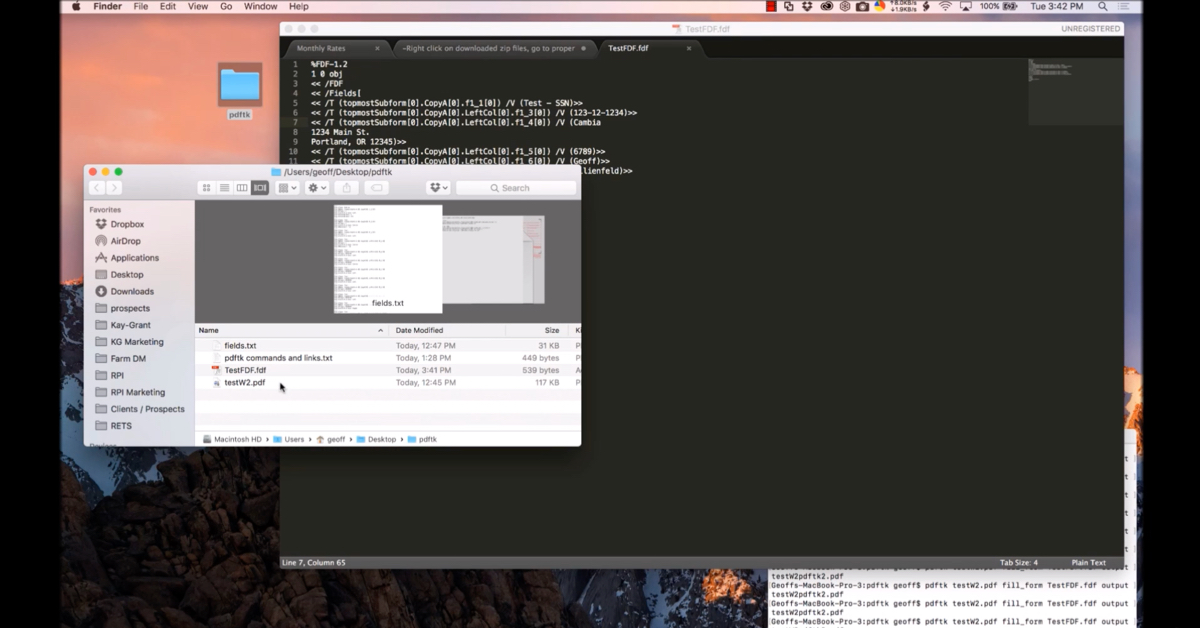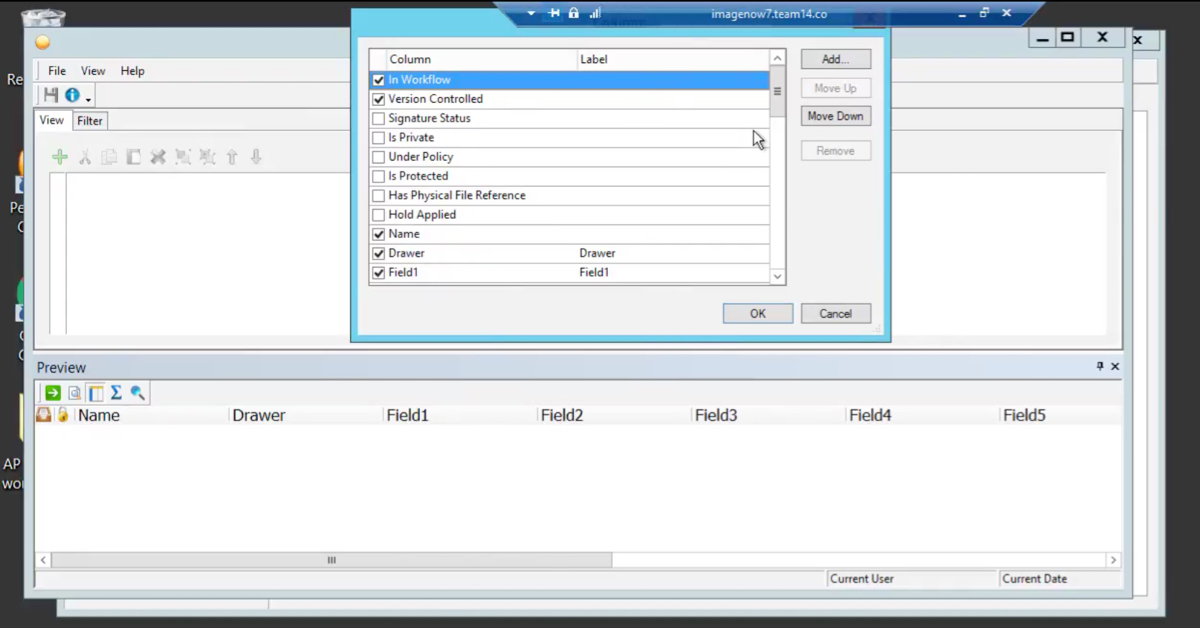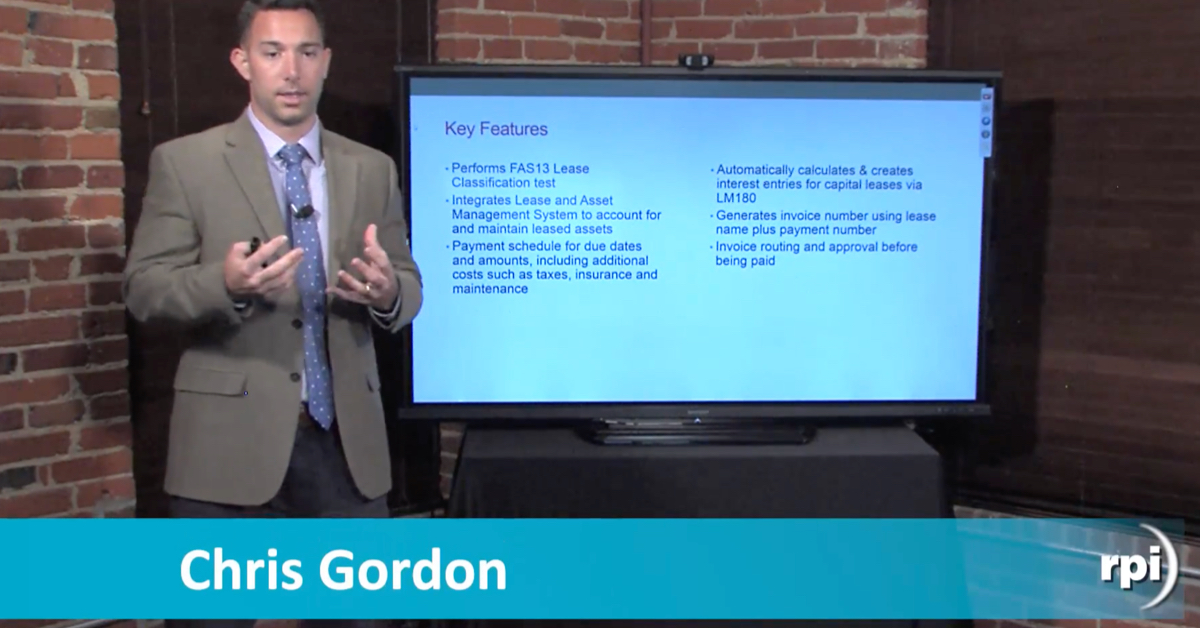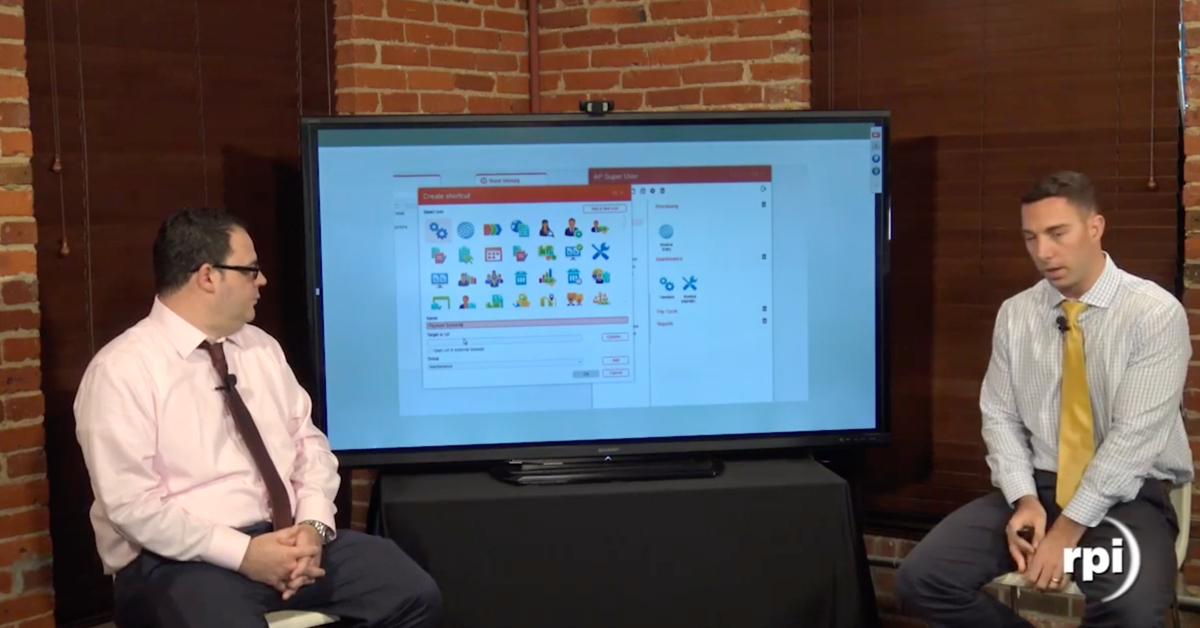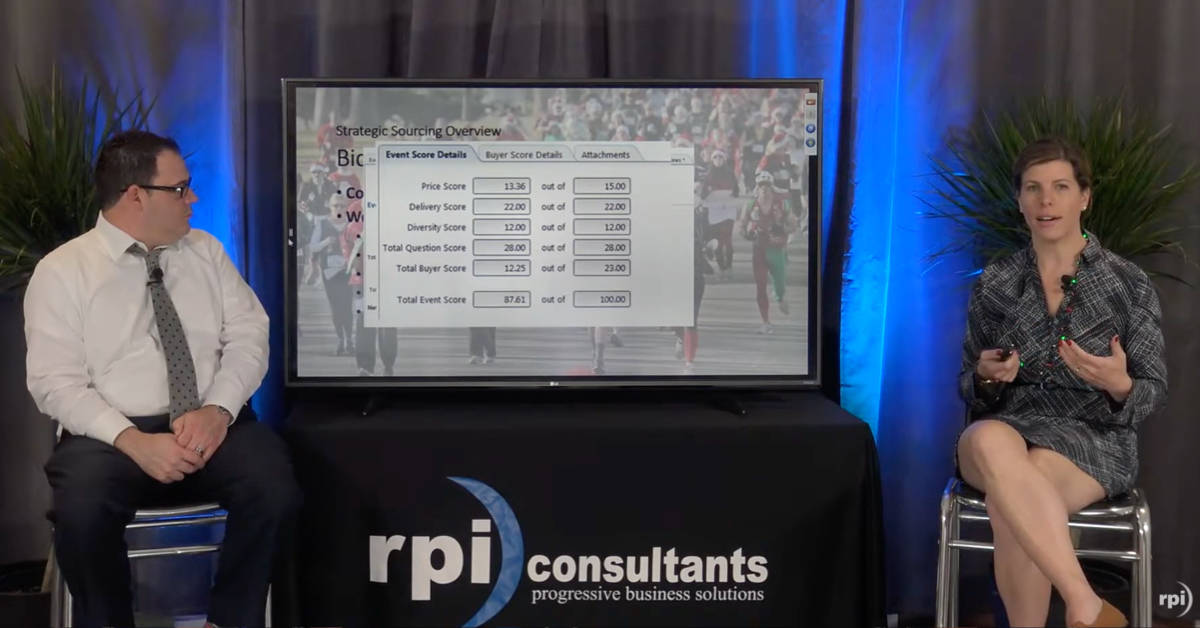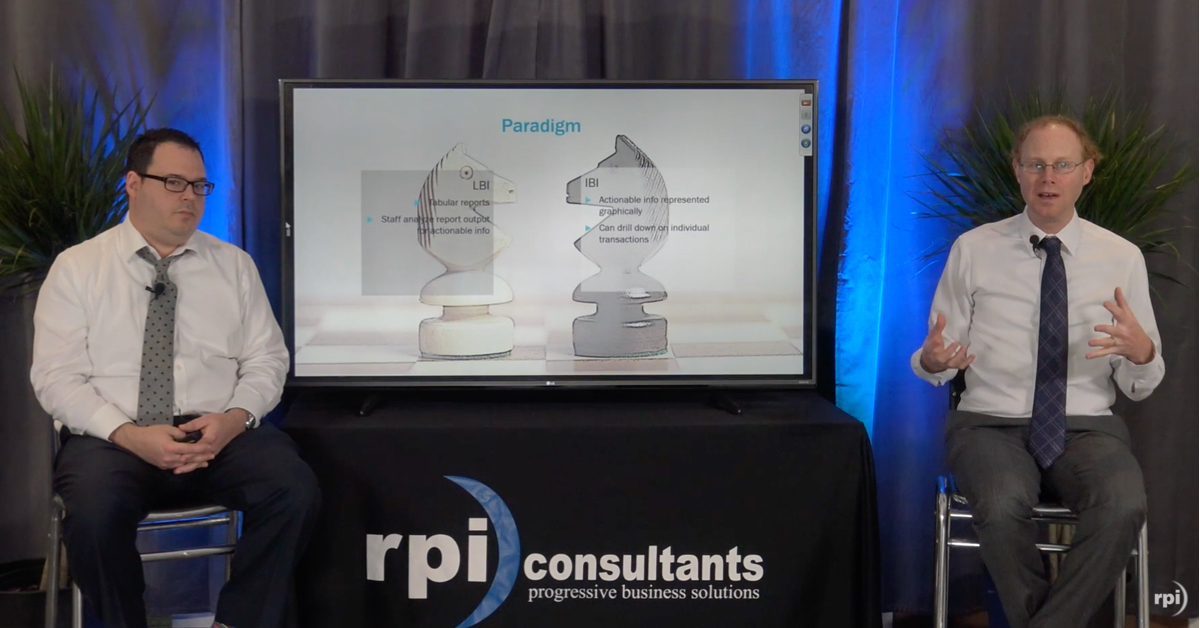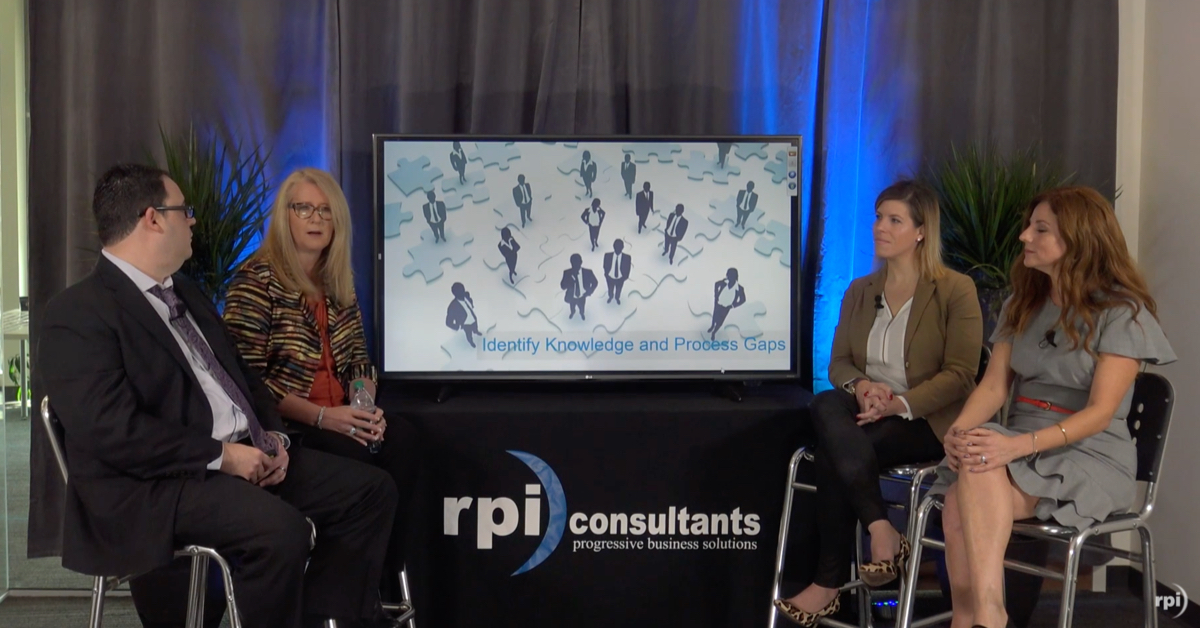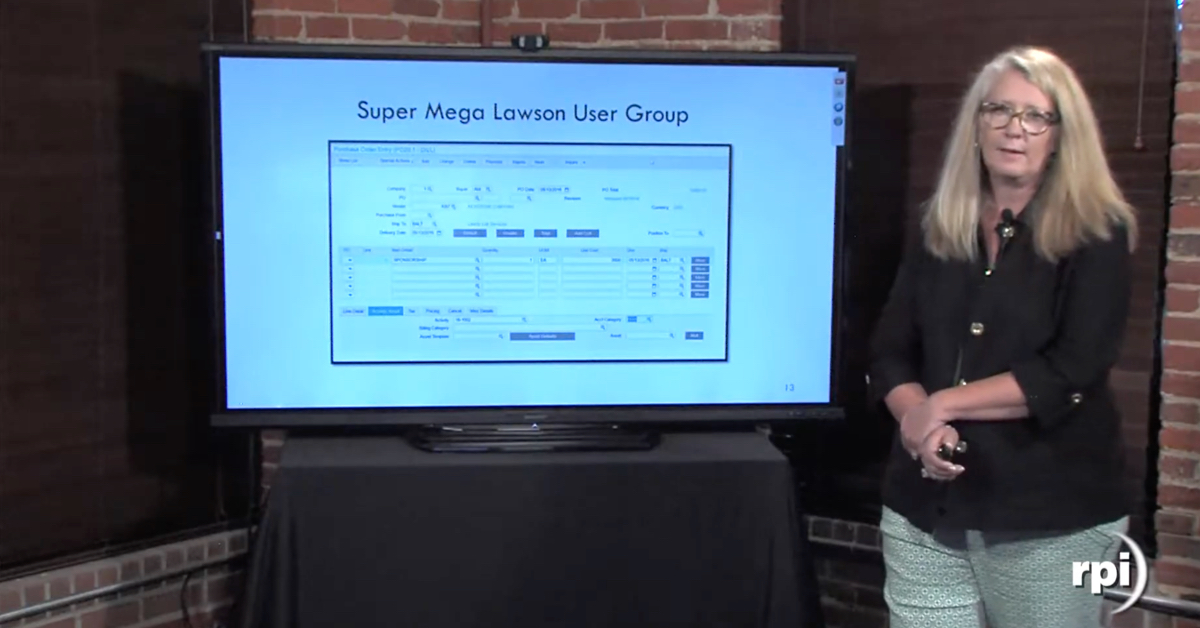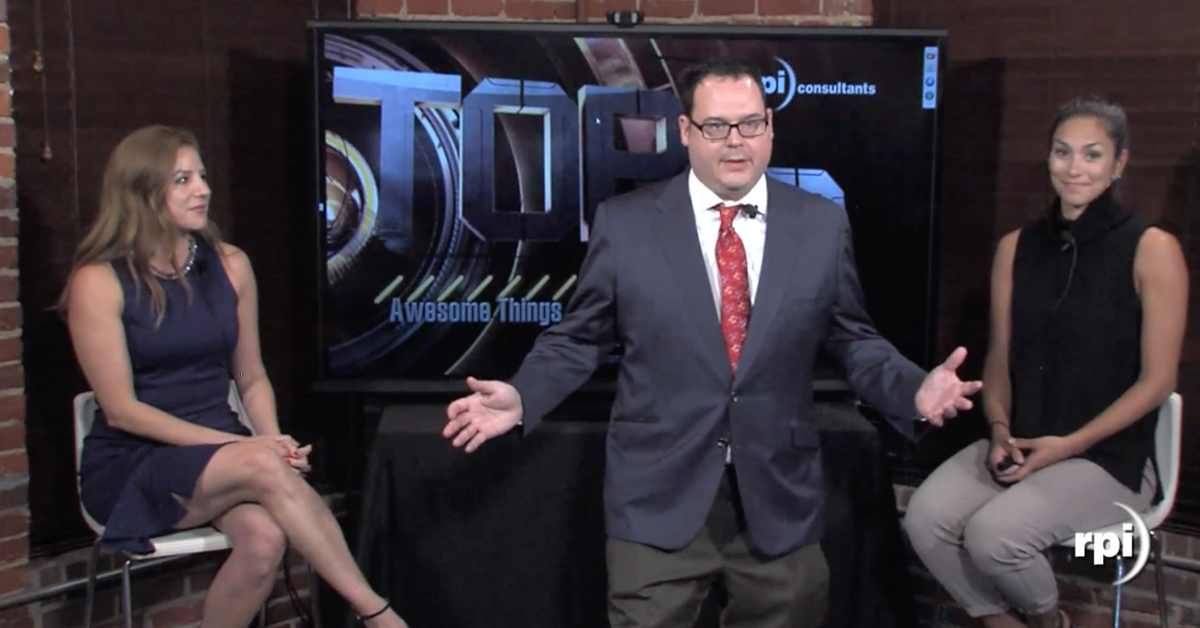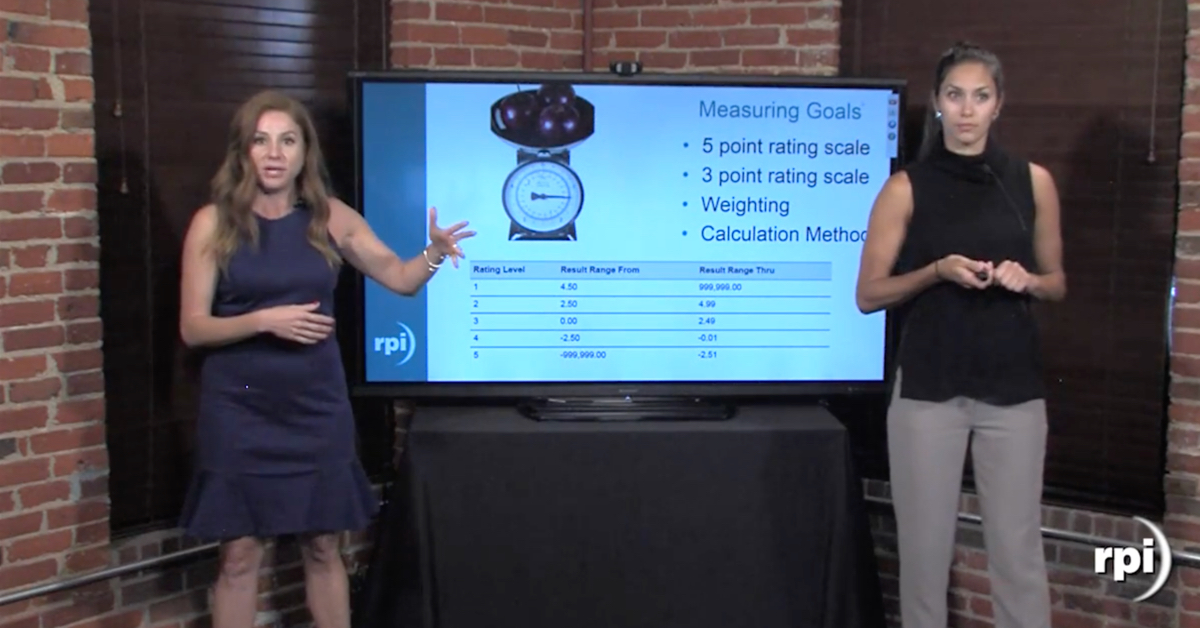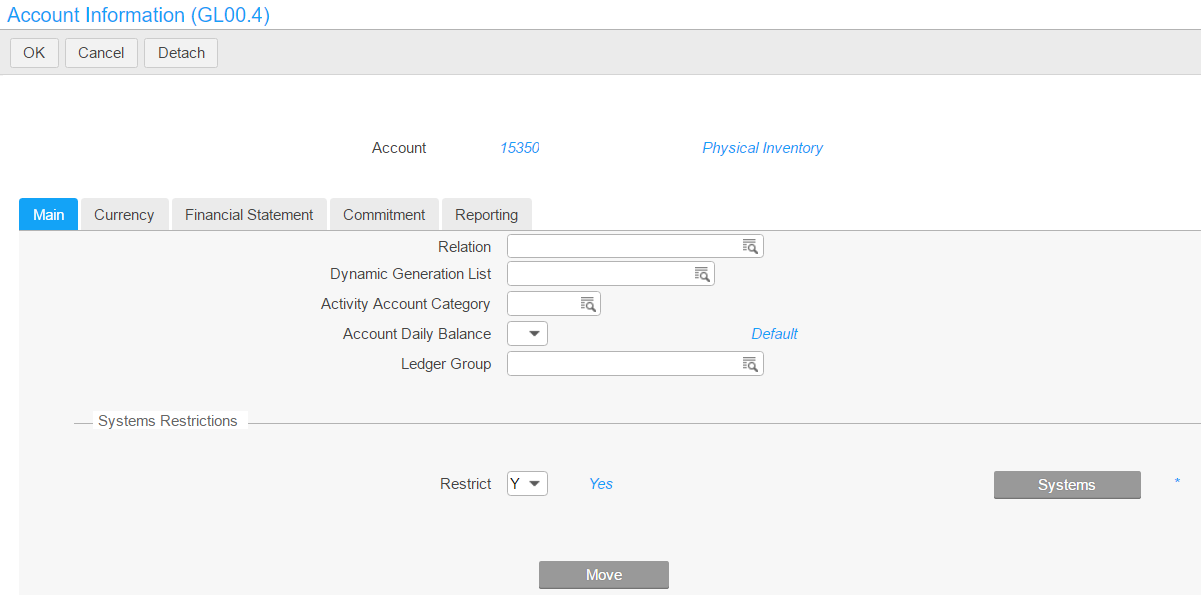Watch the Webinar: HR Forms Library for Infor GHR with Yoga Forms™
Human Resources forms are stubborn things. You can be live on Infor GHR, or any other ERP HCM module, but probably still sending and receiving important employee information using physical and handwritten forms. Physical forms present a risk to any Human Resources department and your GHR solution because they can produce incomplete or inaccurate information, create delays in hiring and compensation, or they can just get lost – never to be found again.
Yoga is RPI’s proprietary software platform that exists to bridge the gap between your business processes and ERP, in this case the gap between collecting important employee information and getting it into Infor. Using Yoga Forms, RPI Consultants is now offering an out-of-the-box Human Resources Forms Library that includes the most commonly used and required forms in HR. The benefit of using Yoga Forms and our HR Forms Library is rapid deployment and discrete data integration with your GHR solution.
In this webinar, Melissa Olson, Practice Director of RPI’s Human Capital Management team, and John Marney, Practice Manager of RPI’s Content & Process Automation team, offer a deep dive into Yoga Forms and our new out-of-the-box HR Forms Library.
Transcript
Melissa Olson:
Okay. I guess we lost John, but in…
John Marney:
I’m on the phone.
Melissa Olson:
Okay, so I’ll just get us started. Hey.
John Marney:
Cool, thanks.
Melissa Olson:
Six minutes late, and I just moved over the weekend, didn’t realize what my camera would capture, so I don’t always live in disarray; you can tell by the way this is going today. But we’re doing a presentation today. We’re Yoga Forms, which you’ll learn a little bit about if you’ve never heard of the term or the product, and how it can help just automate your HR forms or any kind of forms that are related to your employee process. So, it could be IT forms. We’ll kind of get into some examples. With that, my name is Melissa Olson. I’m the HCM practice director at RPI Consultants. I’ve been with RPI about eight years. Before that I had a long and storied career in the Lawson space as a programmer, and then as an HRIS manager, so I’ve sat in both sides. I live in Dallas. As you see, I just moved. So, hopefully the next webinar will look a little bit nicer in the back. John?
John Marney:
Thank you, and thanks, everyone, for pausing your obsessive election coverage to join us. I have been with RPI for six, almost seven years, I think, and I have around 10 years, or over 10 year’s experience with process automation tools, and so I head up our process automation practice here at RPI Consultants. We specialize in all sorts of back office automation, including… Hey, now I’m in the webinar. Almost there. Including accounts payable automation and human resources. There we go, okay. I also have been spending the last couple years getting up to speed on Azure Cloud Architecture as part of our Yoga software deployment, and I am our Yoga product and dev ops manager.
John Marney:
So, really excited to discuss our Yoga forms offering for human resources with you today, and we’ll get this going. So, we’re going to cover some of the challenges that exist within human resources, and that’s both whether you already have a digital solution, or if you’re really coming from nothing, a paper process, then we’ll discuss what our proposal is to help solve these challenges. We will provide a demonstration. If the video doesn’t play because of my computer issues, we will have it available as part of the recording and send it out to attendees afterwards. And then we’re going to discuss how you can get started with using Yoga Forms in your environment. Okay, so…
Melissa Olson:
Yeah, so we talk about data collection and forms and paper, and no matter what industry you’re in, you’re going to have paper processes. You’re going to have web forms that might not be connected to your four databases that you have to kind of translate over. You’re going to have data that is not necessarily HR… You have a place for it in HR that you need to capture somehow. So, it’s pretty critical that you get data for your employees, you get timekeeping data, IT information. There’s a lot of things that go around, having an employee in your system that you need to grab, and all these requirements are system agnostic. An HR department is an HR department. We have different processes, but they’re nuanced, but pretty much everybody does new hires. They do transfers, terminations, regulatory reporting, so these forms aren’t necessarily specific to any one industry, and you’ll find the examples that we’ll talk about today you’re most likely encountering in your organization today.
John Marney:
And these gaps are everywhere, like Melissa said. The requirements to collect this data exist no matter what systems you may or may not have implemented, and so whether you’re coming from a paper-based solution today, or you have some basic information system or electronic data collection that exists, or even, really, if you would consider yourself digitally transformed and have fully-implemented automated processes and solutions, the gaps will continue to exist. There’s some reasons why the systems you have in place may elect to never try to cover them. So, the forms, then, are a natural outcome of the requirements for data collection, and these forms exist because you have requirements, and some of these requirements are now, and some of these requirements are for later. Right now you have some requirements for things that you have to send the federal or state governments, so you have to compose documents like a W-4, et cetera. You have the requirement to be auditable for your forms, and signatures. Did this person complete this document when they say they did, and did are we keeping it?
Melissa Olson:
Yeah, no I just wanted to jump in there-
John Marney:
Did you lose me?
Melissa Olson:
… because for many years-
John Marney:
Okay, yeah, go ahead.
Melissa Olson:
… yeah, no, I was going to say, for many years a lot of organizations or the government required signatures on forms. But there’s been a big shift to e-signatures, so there shouldn’t be any excuses anymore to move those auditable signatures and forms over to an electronic process or tool.
John Marney:
My computer’s completely locked up.
Melissa Olson:
Oh no.
John Marney:
Yeah, and you also have the requirements for security and to be ready for disaster recovery, and then you have the things that we can’t anticipate, things that happen, so COVID is a great example of some things that have rapidly introduced new challenges and requirements for our organization. The great example that we’re constantly being asked about is the payroll tax deferment where organizations say, “Well, maybe we want to provide the option for our employees to elect to do this, but how?” How are we going to do that, and it’s probably a pretty temporary thing anyway, so we can’t realistically expect our ERP provider to push out some rapid change to facilitate that. So, you have these ongoing challenges that you need a flexible solution to be able to cover. And then you have data that just doesn’t sit within the systems that you have today, and Melissa has a really great example of a solution she implemented in a previous slide around employee wellness plan.
Melissa Olson:
Yeah, so Infor doesn’t necessarily have something to track wellness. They have the benefits module, there’s an occupational health module, but if your organization offers wellness discounts based on different things that are being done throughout the year, going and getting preventative screenings, getting a certain amount of steps a day. There needs to be somewhere to track it. At my old company I was able just to build in Lawson, just through Lawson just a wellness program module with [inaudible 00:08:31] case tools to start capturing all of that data. So, we still needed a way to say, “Hey, employee, can you enter these things? Because I can track them in the database.” Employee self-service doesn’t have a screen for them to say, “Yes, I did my preventative screening, yes, I did,” and check all the boxes that would get them their credits at the end of the year, so that was one of the gaps, and we still had paper there.
Melissa Olson:
So, here we’re able to create those forms that your employees can log all of the activities they’re doing for their wellness plans, their wellness programs, and then the form can translate into either database, S3, GHR. We’ll be talking mostly about CloudSuite Version 11 today, but it can definitely be translatable back to the Version 10, and you start capturing some of those fields that do not exist in your current system. Just one example, but there are, I’m sure, many examples out there of things that you guys track that you’re having a hard time either using spreadsheets, access databases, or, well, third party [inaudible 00:09:39] software to track this. The idea is you really want to get all of your HR data, your employee data into your system of record, which is your HRIS system, CloudSuite, HCM. Okay.
John Marney:
Yep, and you have challenges any time you go to implement something, a new process like that. How do I get the data? What do I do with it once I have it, and that includes both the processing or workflow, and then, ultimately, where does it get stored, and what effects does that have, should it trigger additional processes, et cetera. So, why, then, do forms suck? What is it about these that we still continue to have problems with, even though they are ultimately ubiquitous? If nothing else, you have the human element, manual data entry that’s both the person filling out a paper form and the person reading the form. Bad handwriting is… Well, I know I certainly make other people fill out paper forms when it comes to handwriting, because my handwriting is basically illegible, and then it’s impossible to validate it.
John Marney:
Even a person who has great handwriting can write down an incorrect date or an incorrect Social Security number. I know I have filled out forms before and accidentally put the wrong information, things even like my own birthday, which you would think would be impossible to make a mistake on, but I have definitely done it. You also have the inability to really trigger anything off of it, so if it’s paper, we don’t have any way to have a digital driver for other actions that we may already have automated or would like to automate. So, the logic or the decision-making is really limited just to the… If I’m an HR clerk, what decisions have I been trained to make? What decisions am I comfortable making? What options do I even know I have available? So, it’s limited to human categorization and those activities, and then the file room. I know Melissa has seen this across many of our clients, but it is extremely painful to see the costs and whatnot that goes into that.
Melissa Olson:
Yeah, I mean, you guys who are in HR, if there’s HR practitioners on the call here, you guys know you’re looking for somebody’s file. You go to the file room and it’s not there, and if you have a system, check it out. You try and track it down. It should be on somebody’s desk, maybe, where it had a security issue, and then you go and it’s not on their desk. They said they gave it to potentially the VP because there is a noncompete in there, and that person’s leaving. So, you go to the VP and they’re not there. They’re in meetings all week, and it could take you up to a week to track down some of these files, and these are examples that I’ve lived through, and getting those files back in… John mentioned the disaster recovery elements earlier, and if there was a fire, if there was a storm, if something happened, then you have decades of data, employee in one room, it’s gone. So, what’s your backup plan for that?
John Marney:
So, you may be at one of many different stages or anywhere in between these, but just to highlight the kind of stepping stones that we typically see as our clients roll out solutions or digital solutions on that path to automation, level one is kind of we don’t collect any digital data and we don’t care about it, and that’s risky for you and risky for your organization, risky for your employees. We still frequently find many of our clients using just all paper. I’ve been implementing digital HR document management solutions for at least 10 years, and I was doing electronic employee files when I started, and I’m helping organizations do electronic employee files just to start scanning and getting their paper digitized, mostly for the safety of it. Still common today, and so maybe the next step is, okay, we are scanning, so we’re digital, hooray. We can pat ourselves on the back that at least we have begun the journey towards digitization and automation.
John Marney:
Then, potentially using OCR or barcode reading, maybe adding some automation triggers into that so that we’re not still having to hand-key, hand-index all of the data. And then, for many purposes, departments will ask, “Oh, well, we would really like this one form to be digital. It’s something that we have to do a ton of work with all the time, something like quarterly performance reviews, what have you, things that make a big impact just by deploying one form, but each web form is very custom. So, you aren’t really able to scale that to all of your paper forms. Whoever built it disappears, and so you can’t maintain it anymore, so some organizations have-
Melissa Olson:
And I have a funny… No, I want to say I have a funny slash not funny, sad example. I went to an organization and they had a web form, and then they had somebody that was in HR take all of the information from wherever they wrote this web form data and hand-keyed it into the Lawson system, the Infor system. So, you see all kinds of-
John Marney:
Wonderful.
Melissa Olson:
… crazy things out there. Which, again, no judgment. You do what you can do with what you have, and we understand that.
John Marney:
Yep. So, even once you implement pieces, sometimes it can be difficult to keep them connected in such a way that you’re really maximizing the utility of those pieces, and even when you have the full-blown, fancy, brand new HRIS like CloudSuite, and it does a lot, especially as compares to previous versions, you’re always going to encounter gaps, especially when it comes to some of the previous challenges we’ve discussed with short-term or unanticipated requirements. So, what’s our solution? Well, in our opinion, dare I say expert opinion, I can say that because Melissa’s lending her experience to this presentation, dynamic digital forms with a focus on being able to rapidly deploy them to your organization and have maximum flexibility within those forms is the answer.
John Marney:
So, on top of that you could leverage a library of standard and common forms, which means that you don’t have to go build… There are many options for digital forms out there, but if you’re just starting with a blank slate it can take a long time to roll out all of the different electronic forms you need. So, a solution that already contains many of the forms you need in a growing library means that it’s even less time for you to get the solution stood up. The ability to edit those forms, manage them, create new forms within the product is still going to be necessary even with the library, and even with the library you may say, “Well, we want to tweak this out-of-the-box form a little bit. Maybe we want to adjust the look and feel, maybe we need another field here and there.”
John Marney:
So, the ability to continue to edit or modify those forms over time, controlled versioning of them is really important. Of course, the integration, our data is an extremely important part of this, so whether we are pulling data into a form to validate the employee information, or pushing data out of the form into the HRIS to make updates to the employee information there, leveraging those integrations so that you’re using that master data that you have, and it’s very valuable, is really important. And then, of course, meeting our regulatory and other requirements, which is much easier when you have a system that tracks it natively. So, RPI recommends and offers Yoga Forms for this purpose, and it is, put simply, simple, rapidly-deployed enterprise forms.
John Marney:
So, this is just a quick screenshot. On the left you have [inaudible 00:19:07], and on the right we have an I-9 form. It’s really interesting, some of the government forms, I-9s, W-4s. If I go out to try and find just a fillable PDF for these documents. I went to the federal government’s website for the I-9, and they had a link to a fillable PDF, and if you click it takes you to a window that says, “Please wait, file is downloading,” and it never downloads. And so even from the official source, and I tried it across multiple computers, browsers, nobody else could do it either, so even from the official source you can’t get a fillable PDF; it’s practically impossible. So, even without data validations, without automation, providing a way to digitally enter that information and get it output on to the official I-9 document is something that could be extremely valuable, and so that’s something that we offer. That’s part of the demonstration video. All right, so what are we actually offering? Melissa, can you tell us a little bit about this?
Melissa Olson:
Yeah, yeah, so there is a library of forms. I’ve worked with John and team, and the HCM team has worked on all of the forms. Not all of us, but we’ve been building out a library of a lot of the forms that you guys encounter and are using paper-based or some sort of e-form, or a third party. He was showing the I-9. There are other third party products out there that you kind of build on, and we built out this library of some of those common used. You’ll be able to get to all of the forms, whether you need them or not, inside this library and inside your CloudSuite HCM, and it’s continuing to grow, because as we find other examples, as we see different clients using them in different processes, we’re building them into our library.
Melissa Olson:
And then, if the form that you need isn’t in the library, you will have a librarian that will help you build out brand new requirements and build out that custom form that you need. This is a tool that you’ll be able to use to build, so it’s not just a one-and-done or just a library. You will have a tool that you can continue to grow the forms that you need in your organization. There are already-built integrations, as you see there, with CloudSuite HCM and different documents for solutions. Did I miss anything?
John Marney:
Right. No, we’ve been able to leverage our experience across… Especially with Lawson for Version 10 and for CloudSuite to make sure that these integrations are pre-built, they’re plug-and-play, ready to go, and we also have a lot of experience with integrating with other ERPs and with virtually every common document management platform. So, the idea is that any deployment be over forms should be plug-and-play to begin taking advantage of the HR library. So, next, in addition to the out-of-the-box form functionality, Yoga Forms does include a designer and editor, right? So, you have to be able to edit and continually maintain these forms. It is a very simple drag-and-drop builder, and so it has all the selection of different kinds of form tools that you might expect, digital signature lines, which can be used for signing on mobile with your finger, or just with your mouse, or even if you want to go so far as to connect a signature pad to a computer, you can use that as well.
John Marney:
It allows for uploading attachments, all the different kinds of fields like drop-downs, the radio buttons and text fields, and there’s all that. And of course, like I mentioned, we can populate PDF templates, so natively it can output the form as it looks, or we can populate a different form for things where we need a certain structure. Again, customizing existing forms, and you can… If there are any additional integrations that you want to create that aren’t already out of the box, those can be done through a GUI-based SQL and web service integration builder. So, it’s a very powerful form designer. I used a lot of different products and I really think this is one of the best.
John Marney:
Another note on the integrations, again, I think that much of the power of this solution comes from being able to leverage that master data, whether it’s inside the ERP or another system. We actually use our other integration product called Yoga Connect to facilitate that transfer of information between business systems and Yoga Forms, so that’s really pretty invisible to users. They won’t ever see Yoga Connect, and you know it’s working well if they never have to hear about it, because the integrations are just there. Additionally, you have single sign-on and integration with active directory, standard enterprise functionality. We also have integrations with true digital signature services, so while we do provide for digital signing so you have that representation, which generally covers all of the auditability requirements you might have, a true digital signature solution is more of a technical difference than it is a functional one.
John Marney:
So, we’re not looking to replace things like DocuSign or AssureSign or Adobe Sign, and so we do for when that is required from a contracting or legal perspective, we do have those ready to go, and really any other business systems. So, if you want to connect to your CRM or financial system or anything else, even external providers, we do provide some external connections to things like benefits providers via Yoga Connect, and so virtually anything that you need to connect to, as long as it’s available to access, can be accessed from Yoga Forms. And of course, these are designed and built by experienced consultants, and that’s where Melissa comes in.
Melissa Olson:
Yeah, as we talked about, we as a consulting team have the background. A big percentage of us have been in the HR department before we came into consulting, and we’re out seeing different types of organizations, different verticals, different processes on a day-to-day basis, and we can understand the different organizational needs, as I said earlier, to bring those forms in. Something we’ve never seen before in healthcare pops up in K through 12, and we want to make sure and capture forms for all of those different verticals.
John Marney:
That’s one of the primary advantages to this product is that it’s built and delivered by the people who are asked to fill these needs all the time. However, over some of competing products, and like I said, there are a million different digital form solutions out there, I think there are some other key advantages. Yoga Forms does offer in its current package unlimited users and unlimited form types. You’ll see that most digital form products are priced per user and will get extremely expensive very quickly if you’re trying to deploy this out to your enterprise. Right now we’re discussing our HR forms library, but additional libraries are being planned for the future; for example, information technology forms, or IF, finance. There are a number of other forms that we have available and are working to package together or bundle together for additional libraries. We do offer built-in workflow and digital signing, so you may have an existing workflow solution. That’s fine. If you want to use that, great. If not, we do have a workflow for approvals, for reviewing, for multiple filling steps available.
John Marney:
Ultimately, it’s important that users feel consistent in their interface, that it is friendly to them and it doesn’t look like we’re taking them to a whole new system that is unrecognizable to them. On a form-by-form basis, the look and feel is customizable. In our demo video you’ll see that we’ve customized the forms to look like Infor CloudSuite, and so whether it’s that or another look and feel that you’re after to tie it into another system, that is highly customizable. To make sure I speak to Mom and Dad, who are making the decisions around these kinds of systems, Yoga Forms is very scalable, safe, and secure.
John Marney:
So, it is a Cloud-based deployment and SaaS model. It does provide, again, direct system integration via Yoga Connect, so all integrations are owned, maintained, and secured by RPI. However, the data does remain in your core business system, so RPI does not store employee data. RPI does not store any of your business system’s master data. We facilitate the integration with the form, and all integrations are performed using strong encryption, and ultimately, we are able to rely on the very good security and stability offered by the Azure platform to elevate our offer. Okay, so I do have a demo video. It’s about five minutes long.
Speaker 3:
RPI Consultants’ Yoga Software Suite has been designed, built, and delivered by expert consultants with decades of experience in finance and supply management, human resources, process automation and technical services. From the ground up, Yoga has been architected to be both a flexible software platform and business solution. Yoga Forms is a solution for rapidly-deploying electronic forms to your enterprise. In this demonstration I’m going to show the flexible features of Yoga Forms, in addition to the out-of-the-box human resources form library. Yoga Forms offers a seamless, deeply integrated experience with your other business applications.
Speaker 3:
Yoga Forms can be presented to users through your ERP, such as Infor, your company internet, such as SharePoint, or directly from Yoga Forms. In addition, form-filling can be triggered from within your workflow solution or robotic process automation tool. In addition to a seamless and customizable user experience, Yoga Forms are readily integrated into your business data, including single sign-on. In this example an I-9 form is accessed from inside employee self-service and Infor CloudSuite ERP, and employee information is automatically populated inside of the form. This form has been styled to be consistent with the Infor user interface. Form validation rules ensure that a user completes all required fields, including a digital signature, and providing the required identification documents via document attachment.
Speaker 3:
The user can save a PDF, or the completed form is sent to their email. They then submit the form. The I-9 then needs to be reviewed for completeness by a human resources clerk. This can be done by sending the document through our plug-and-play interface to popular workflow systems like Kofax TotalAgility or Hyland OnBase. However, a Yoga Forms subscription also offers the option of built-in workflow for reviewing, approving, or multi-step form-filling. Here, I’m acting as the human resources clerk by reviewing the provided information sent via email. I open the form, review the information that the employee provided, download the supporting documentation to review and provide data entry, select the employee’s first day of employment, sign, verify that my company information has been populated, and submit the form. The document then goes to be stored in the electronic employee file and Infor document management or any other document management system.
Speaker 3:
In my next example, a W-4 is accessed from a company’s SharePoint internet. The user reviews their information, completes their elections, and signs the document. Additional instructions are provided. Forms with certain formatting requirements, such as those required by the government, are output in that required template. With the included Yoga Forms workflow, the HR clerk receives a task to review and approve the document. In my final example a user needs to complete their designation of beneficiary form. It is accessed from inside of the Infor ERP. In this use case, due to local regulations, human resources requires the spouse to sign the form if they are not the primary beneficiary. The user selects the plan, verifies their personal information is correct, and designates primary and contingent beneficiaries. Since the user is selecting their child as the primary beneficiary, the PDF will be sent through DocuSign to the spouse before updating the beneficiary information in the ERP.
John Marney:
Just to give you an idea what the actual forms are that we are providing as part of this library, again, this is just right now, so November of 2020, but it will be growing continually as our clients continue to suggest, recommend, or have new forms built. So, I’m not going to read through every one of these, but I want to highlight a few that I think are pretty important. The first couple, the W499, again, these are things that even from the official source can be hard to get an actual fillable PDF, much less something that has validations, calculations, workflow built around it. So, we do offer those integrated with your HRIS. Designation of beneficiary allows you to do primary, contingent beneficiaries.
John Marney:
Additional logic, a use case that we encountered, which you’ll see in the demo video, was requiring a spousal signature if they are not the primary beneficiary, and so we can facilitate that. And then, all sorts of acknowledgments. These are common, and there’s dozens of them that can be applied to all sorts of organizations. The handful that we’ve put together so far for drug-free workplace acknowledgement, have I received the employee handbook, code of conduct, et cetera. And of course we have a roadmap, so various types of agreements such as nondisclosure agreements, and of trying to improve some of the processes around how HR communicates with IT, so when employees are hired, transfer terminated, if we need to provision assets for them like a smartphone or laptop, and then are we making sure that we get those back?
John Marney:
All those kinds of data collection, again, acknowledgements by the employee that they’ve received these devices, those kinds of data collection activities we’re looking to add to this library as well. This isn’t in the demo video, because the focus is really on the presentation to users how the forms themselves are actually used, but just as kind of a quick preview on the form-building side, this is a screenshot of the designer, and so on the main area of the page you kind of have the canvas. That’s where you add the fields to. You see I’ve got an employee name, a signature pad, et cetera, and on the left you kind of have your form field toolbox. So, all sorts of different controls.
John Marney:
Some are there for sanitizing inputs such as a phone number, to make sure that it’s a phone number, email addresses. You have some common things like US states so that it’s a static list. Dates, times, grids, repeating grids, tables, et cetera, et cetera. So, a huge toolbox, and there’s even more for things like custom integration, so the ability to, again, version these forms, test them as you continue to build. Copy forms so that if you want something that’s very much the same, but just slightly different, you can do that as well, are all there, available inside of the designer. Okay, so Melissa, how can people get started with Yoga Forms? I think you’re on mute.
Melissa Olson:
Yeah, you can give one of us a call or an email. John, myself, any of your RPI sales solutions account managers, and then here are kind of the options and what happens. So, you give us a call, you’re like, “Hey, I’m really interested in Yoga Forms. I don’t know how many I have now, but let’s get it started, and I don’t even know if everything can be converted into a Yoga Form, or if there’s still some stuff I have to leave in web form.” So, we’ll go through and you’ll talk through requirements on the forms, discovery session, just as you do with your regular module implementations, or any of the other projects that you have with Infor software, and then talk through… John, you want to jump in on the data integration? I know this is a piece you’re good at speaking in.
John Marney:
Yep. So, while we know that you’re going to want to integrate with your HRIS, we might need to identify whether there’s any other points we want to integrate with. Again, whether it’s a government service or third party, or just other systems within your environment, and then we would want to identify what solution you have or may need for archiving this data. So, with Infor, with CloudSuite, we leverage Infor document management, and that’s great, and we can help you set that up if you haven’t already. But if you are not using Infor, or for some reason aren’t using Infor document management, we would want to identify what that looks like. Then, finally, part of this is making sure that you receive training, empowerment, a rollout mechanism for introducing this to your organization.
John Marney:
So, as far as pricing, pricing is really based on your requirements. However, it is tiered, as you might expect, from a subscription service, and we put this together, I think, to really be differentiated against other products. The silver level, the entry level, contain the form library. Everything that we have built and want to include inside of the library, and everything we’re going to continue to add to the library will be available to you, as well as other basic forms that may get rolled out, and it includes integration with your document store, so again, Infor document management, and includes the built-in workflow. So, really, I think in the basic level we want to make sure that you have everything that you need to begin using them and make sure that you’re capturing all of the value out of that digitization.
John Marney:
At the gold level the forms are a little more integrated. That’s where we’re going to leverage that HRIS master data for improved validation, actually submitting data back to the HRIS to update employee records. Then, the gold level also includes some important features such as single sign-on, and then, at the platinum level you’ve got access to the form builder through the designer, and access to, really, us. So, you get the personal librarian to help you craft the forms for your organization. So, I think that as compared to the structure that most form solutions provide, which are either based on user, based on number of form types, usually very limited, or based on a price-per-submission, which we don’t price any of those ways, I think it is extremely competitive.
John Marney:
Okay, however, not everybody fits within the tiers. Not everybody’s going to fit within the box, so there are Platinum+, if you will, enterprise packages available. We do have an on-premise option, including one that includes the GHR forms library. That said, the on-premise option is going to be missing some of the features and generally requires a lot more setup. So, that’s really on a case-by-case basis. Also, any really advanced immigrations or tie-ins to other systems, and then, also, if you really want RPI to take over more of the management of this process and not just the solution, we do offer more services around, again, how to get this into your organization and propagate it, as well as designing forms for you and interacting with the departments or business analysts, or whomever it might be to get them to put.
John Marney:
Okay. All right, so thank you for bearing with us with our technical difficulties and whatnot. Yes, we did get a question. Do you do demos of the application? Yes, absolutely. Again, the demo video is available through the handout and will be available as this recording. However, if you’re looking for a customized, personal demonstration, if you have some kind of use case that you would like to see, maybe it’s a form that you think should be included in our library, or just something that’s specific to your organization, either way we’re happy to facilitate that. So, yes, that’s a great question. All right, so let’s wrap up here. What did we discuss today? We discussed some of the problems that exist in a modern human resources department, some of the challenges that are faced, and the different types of implementations that exist that you may have or may not have.
John Marney:
We previewed the offering in Yoga Forms for forms library, and we discussed how you can get started with Yoga Forms. So, if you’re interested, this is a great contact point. This is basically a way to reach me, but I share this with some other people. So, [email protected] is a great catch-all email box. This is also the support inbox for all of our Yoga products, so plenty of people standing by to take your questions there, so please feel free to reach out, or if you have my contact information, or your account executive, or Melissa, feel free to contact any of them.
John Marney:
We do have additional Yoga products, so as I mentioned, Yoga Forms is just one of a Yoga products suite. I’m not going to talk to all these, but we will be updating a lot of our content on our website around each of these through the next couple months. We did do a webinar last month on just kind of a high level of all of the products and kind of how they’re going to look going into 2021, so if you’re interested in that, that webinar is available on our website. We also do have some upcoming events. Melissa, do you want to talk a little bit about the CloudSuite 101 series?
Melissa Olson:
Sure. CloudSuite 101 kicked off probably mid-October, maybe closer to the beginning of October, and every Friday at lunchtime, RPI is doing some sort of feature of CloudSuite. So, we started off with the financial supply chain, HCM, and tech, and then we’ve been moving into healthcare and public sector and different areas, different verticals. Then we’re going to move into the implementation, what to expect, why CloudSuite, why not CloudSuite, and they will run through about mid-December. Again, they’re every Friday at noon Eastern, and you can check our website for information, and you can sign up at the Digital Concourse, the old Digital Concourse site, and yeah. Jane is for that. Virtual User Exchange. We had a couple of those in the spring and summer. We will be doing another one in January very similar to the last one. Lots of presentations, lots of new information, lots of education sprinkled throughout the day, and then I think this is yours, John, the last one.
John Marney:
Yeah. Yep. So, yeah, the Virtual User Exchange, I think we’re planning on doing two in 2021. Really great events, tons of content. We bring in our partners, all of our software partners. We bring in other vendors that we work with, other people that just are relevant to this ecosystem that we share, and so if you haven’t attended, or even if you have, I definitely recommend checking out the sign-ups, which I would imagine will open up in the next 30 days or so. And then, next month… So, my team does webinars every first Wednesday, of which this is one. Next month, in December, we are going to have a webinar on planning for your strategic automation initiatives in 2021, so whether that’s HR form digitization, or AP automation, or looking at robotic process automation, whether you’re looking at or already a user of Kofax or Hyland products, that’s what we’re going to be talking about.
John Marney:
So, again, that’s the first Wednesday in December. If there’s any other questions, please feel free to submit them to this webinar, or into the [email protected] email address I shared. There are a number of links here for additional information about our services, about our software, and knowledge base about frequently asked questions and things like that. So, thank you for joining us today. Appreciate your attendance and bearing with us through some of the challenges. Please check out the demonstration video. I think it’s really compelling. And thank you, Melissa.
Melissa Olson:
Thank you. Thank you, John. Thank you, guys.
John Marney:
All right. Have a good one.
Melissa Olson:
Bye.
Want More Content?
Sign up and get access to all our new Knowledge Base content, including new and upcoming Webinars, Virtual User Groups, Product Demos, White Papers, & Case Studies.
Entire Knowledge Base
All Products, Solutions, & Professional Services
Contact Us to Get Started
Don’t Just Take Our Word for it!
See What Our Clients Have to Say

Denver Health
“RPI brought in senior people that our folks related to and were able to work with easily. Their folks have been approachable, they listen to us, and they have been responsive to our questions – and when we see things we want to do a little differently, they have listened and figured out how to make it happen. “
Keith Thompson
Director of ERP Applications

Atlanta Public Schools
“Prior to RPI, we were really struggling with our HR technology. They brought in expertise to provide solutions to business problems, thought leadership for our long term strategic planning, and they help us make sure we are implementing new initiatives in an order that doesn’t create problems in the future. RPI has been a God-send. “
Skye Duckett
Chief Human Resources Officer

Nuvance Health
“We knew our Accounts Payable processes were unsustainable for our planned growth and RPI Consultants offered a blueprint for automating our most time-intensive workflow – invoice processing.”
Miles McIvor
Accounting Systems Manager

San Diego State University
“Our favorite outcome of the solution is the automation, which enables us to provide better service to our customers. Also, our consultant, Michael Madsen, was knowledgeable, easy to work with, patient, dependable and flexible with his schedule.”
Catherine Love
Associate Human Resources Director

Bon Secours Health System
“RPI has more than just knowledge, their consultants are personable leaders who will drive more efficient solutions. They challenged us to think outside the box and to believe that we could design a best-practice solution with minimal ongoing costs.”
Joel Stafford
Director of Accounts Payable

Lippert Components
“We understood we required a robust, customized solution. RPI not only had the product expertise, they listened to our needs to make sure the project was a success.”
Chris Tozier
Director of Information Technology

Bassett Medical Center
“Overall the project went really well, I’m very pleased with the outcome. I don’t think having any other consulting team on the project would have been able to provide us as much knowledge as RPI has been able to. “
Sue Pokorny
Manager of HRIS & Compensation
MD National Capital Park & Planning Commission
“Working with Anne Bwogi [RPI Project Manager] is fun. She keeps us grounded and makes sure we are thoroughly engaged. We have a name for her – the Annetrack. The Annetrack is on schedule so you better get on board.”
Derek Morgan
ERP Business Analyst

Aspirus
“Our relationship with RPI is great, they are like an extension of the Aspirus team. When we have a question, we reach out to them and get answers right away. If we have a big project, we bounce it off them immediately to get their ideas and ask for their expertise.”
Jen Underwood
Director of Supply Chain Informatics and Systems
Our People are the Difference
And Our Culture is Our Greatest Asset
A lot of people say it, we really mean it. We recruit good people. People who are great at what they do and fun to work with. We look for diverse strengths and abilities, a passion for excellent client service, and an entrepreneurial drive to get the job done.
We also practice what we preach and use the industry’s leading software to help manage our projects, engage with our client project teams, and enable our team to stay connected and collaborate. This open, team-based approach gives each customer and project the cumulative value of our entire team’s knowledge and experience.

